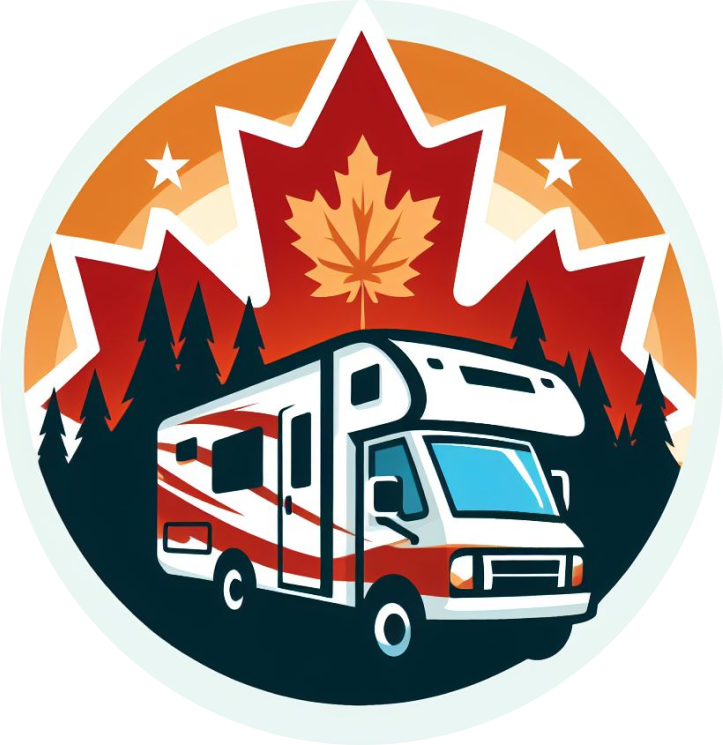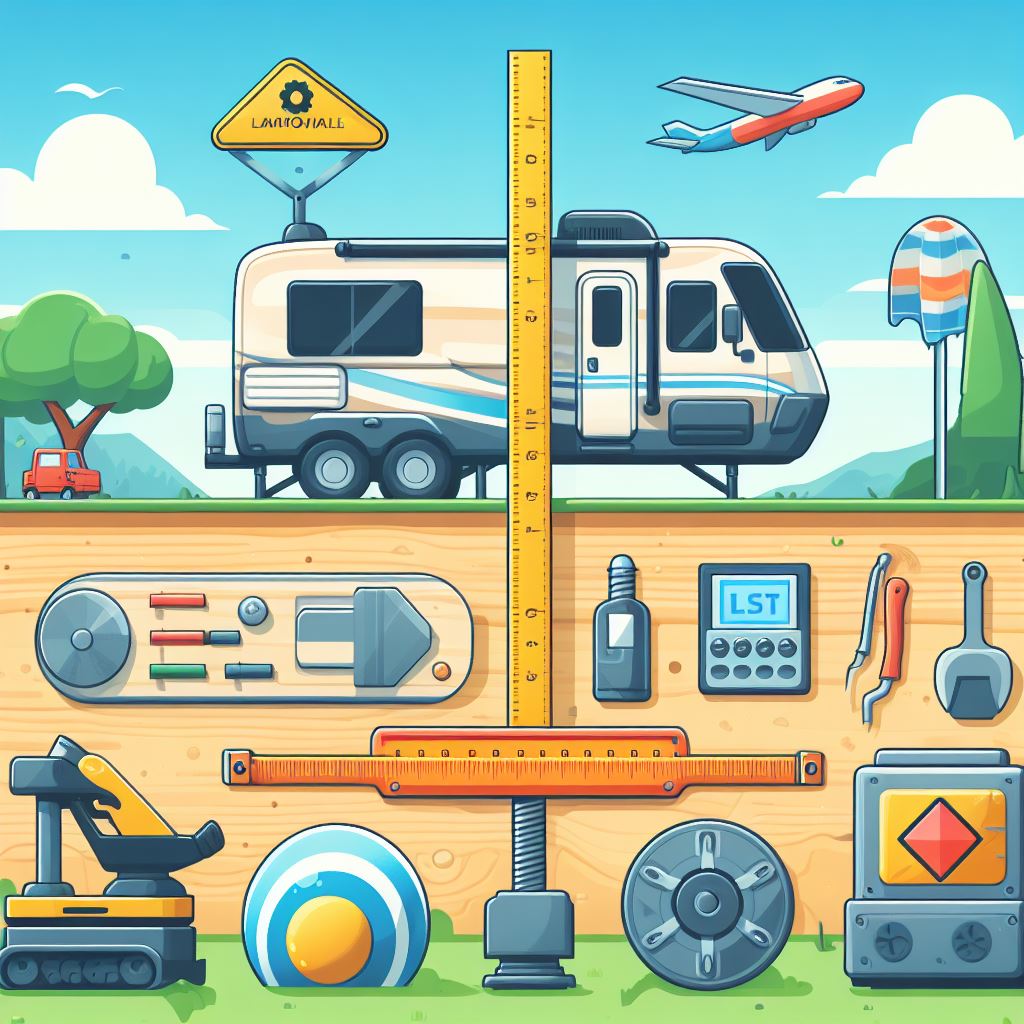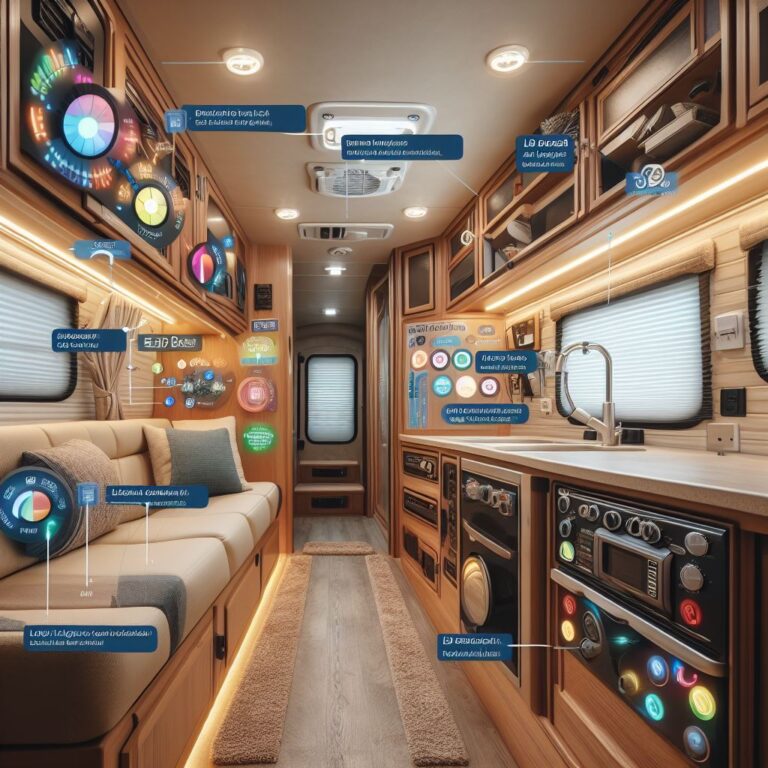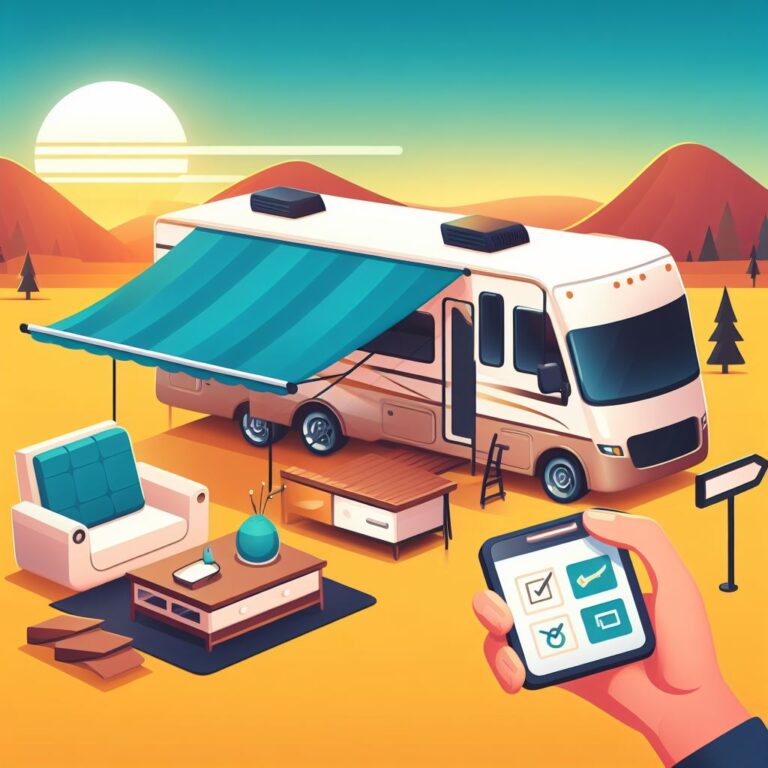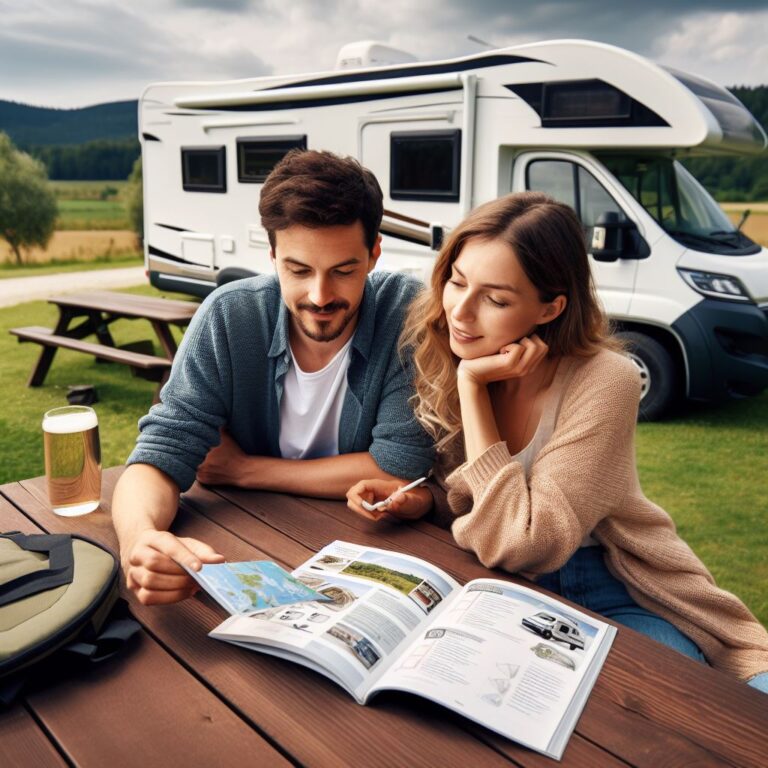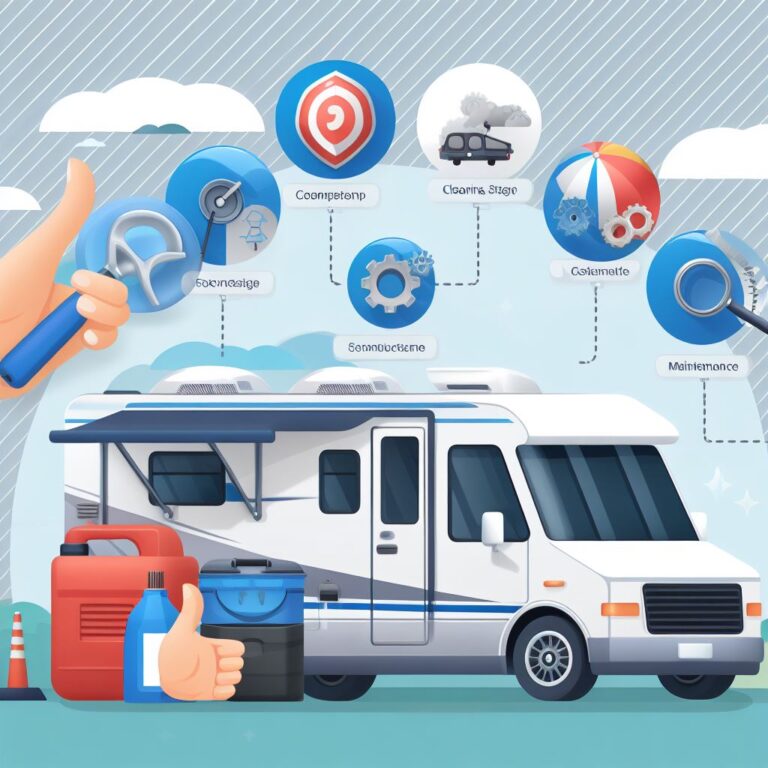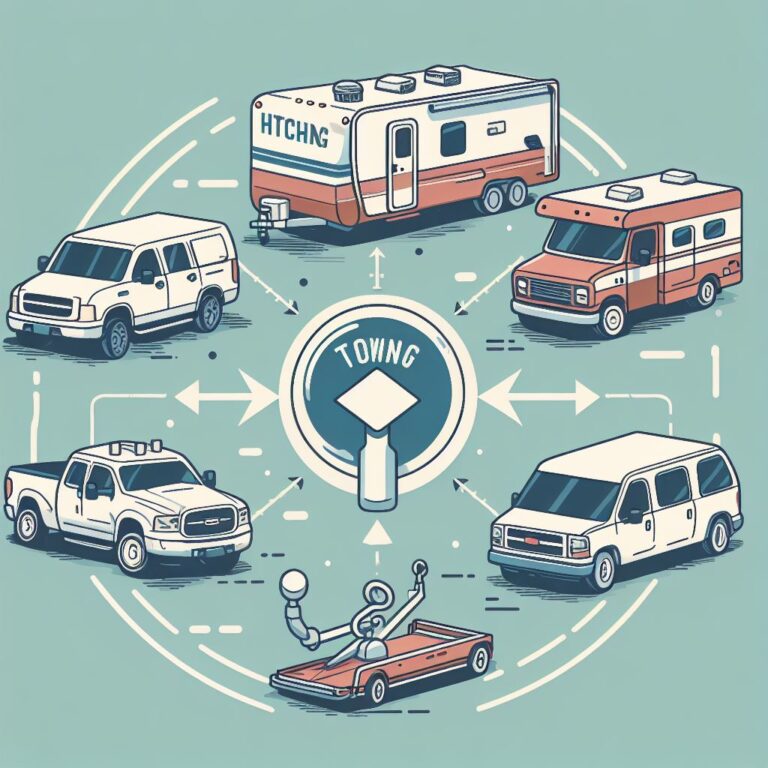How To Choose RV Leveling & Stabilization
Understanding the Importance of a Level and Stable RV
When embarking on a recreational vehicle (RV) adventure, ensuring that your vehicle is level and stable is paramount. A leveled RV provides a comfortable and safe environment for dwelling whether parked or on the move. If the RV is not balanced, doors may swing open or shut unexpectedly, creating a safety hazard. Appliances within the RV, such as refrigerators, which require a level platform to operate correctly, may also suffer the consequences of an imbalanced vehicle resulting in damage or malfunction.
Moreover, the stability of an RV is essential to prevent undesirable motion or swaying. A stable RV prevents unnecessary stress on the structure of the vehicle, prolongs its lifespan, and contributes to the comfort of the users. A stable and level RV, therefore, guarantees not only the comfort but also the enduring serviceability of the vehicle, making it a critical aspect of RV maintenance and use.
Different Types of RV Leveling and Stabilization Systems
Recreational Vehicles (RVs) come with their own unique set of challenges, ranging from maneuvering, parking to leveling and stabilization. This is where leveling and stabilization systems come into the picture. They help to provide a solid, stable, and leveled base, ensuring the RV is not rocking or leaning, thus providing a safer and more comfortable living space. There are primarily two types of systems used – manual and automatic.
Manual systems, which tend to be cheaper, require physical work and a good eye for knowing when the RV is level. This might involve using a spirit level and adjusting RV leveling blocks or jacks until the vehicle is balanced. More advanced automatic systems use sensors and mechanized jacks to level the vehicle often just with a click of a button. They, however, come with a higher price tag and generally demand more maintenance.
Essential Features to Consider When Buying an RV Leveling System
The first feature to deliberate over when buying an RV leveling system is its ease of use. You don’t want a system that’s going to take hours to set up or require an extensive manual to understand. Look for a system that boasts user-friendly design and clear instructions. Some models will even have smartphone integration, allowing for easy and precise adjustments at the touch of a button.
Durability is another key aspect that shouldn’t be overlooked. This system is going to bear the weight of your RV, so it needs to be sturdy and reliable. Ideally, it should be made from rust-resistant materials to ensure it can withstand the elements, especially if you’re going to campsites that may have harsh conditions. Further, the system should also be capable of coping with the gross vehicle weight of your RV. So carefully check the weight capacity of each system before making your choice.
Factors to Bear in Mind When Selecting an RV Stabilization System
When choosing an RV stabilization system, the first factor to consider is compatibility. Not all systems will fit or work optimally with every type of recreational vehicle. Therefore, it’s essential to determine what system is compatible with your specific RV model and make. Take the time to study the manufacturer’s recommendations, as well as the specifications of the stabilization system. Measure the dimensions of your RV and contrast them against the requirements of the system to verify a good fit.
Another vital factor to consider is the system’s performance and reliability. A well-performing stabilization system will ensure a stable, undisturbed living environment, free from unwanted movement and shaking. Furthermore, the system should have good operational longevity. Research on the durability of the product and its track record of performance under various conditions. A system with a reputation for requiring frequent repairs or replacements might not be the best choice, irrespective of its lower initial cost.
The Role of Price and Budget in Your Decision for RV Leveling and Stabilization
Price plays a significant role in determining the type of RV leveling and stabilization system you choose. Different systems have different price tags depending on their design, functionality, and brand. Manual leveling systems tend to be more affordable, making them a go-to option for many RV owners who are budget conscious. On the other hand, automatic or hydraulic leveling systems can be quite pricy due to their advanced features and efficiency.
It’s essential to align your budget with your needs and preferences for an RV leveling and stabilization system. While a high-end leveling system might offer superior functionality, it might not be a practical option if it far exceeds your budget. Conversely, choosing the cheapest system you can find may save you money initially, but might prove costly in the long run if it lacks in performance or durability. In the end, wise decision involves balancing budget considerations with the quality, durability, and convenience offered by different leveling systems.
Reading Reviews and Recommendations on RV Leveling and Stabilizing Tools
Purchasing an RV leveling and stabilizing system can often seem challenging because of vast array of choices available. Therefore, it can be useful to turn to reviews and recommendations to help guide your decision. By reading through the experiences of others, you can gain valuable insight into what specific aspects to consider. This could range from the product’s durability and performance to its ease of the installation process, and much more.
Online and in-store sellers often provide user-based reviews of RV leveling and stabilizing tools, which can be a handy reference. These reviews are usually reflections of personal experiences and contain both positive and negative viewpoints. Similarly, expert recommendations available on various RV blogs, magazines, and forums can help in assessing and comparing different models. Both user reviews and expert recommendations can pave the way to a more informed and confident purchase.
Considering the Size and Weight of Your RV in Choosing Leveling and Stabilization Equipment
The size and weight of your recreational vehicle (RV) play a crucial role in the process of selecting suitable leveling and stabilization gear. Not only do these factors influence the stability of your vehicle, but they also translate directly to the type and size of equipment required. Substantial RVs, for instance, will require strong leveling blocks or jacks capable of supporting their hefty frame. On the other hand, smaller RVs or camper vans can typically make use of simpler, more compact devices for the same purpose.
Another aspect to consider is that the weight distribution within your RV can also affect its balance. Uneven weight distribution can lead to instability, which in turn requires more robust leveling and stabilization tools to correct. Similarly, a bulky RV with much of the weight concentrated in one area is likely to require differently placed jacks or stabilizers. Therefore, understanding your RV’s specifications is a fundamental step towards providing it with the correct type, size, and placement of leveling and stabilization mechanisms.
Exploring Top Brands for RV Leveling and Stabilization Gear
When it comes to dependable RV leveling and stabilization gear, certain brands consistently rise to the top in terms of reliability, innovation and customer satisfaction. These leading brands in the industry have made their mark through years of quality performance, offering a range of products that appeals to various RV types and sizes. Names such as Camco, BAL RV, and Andersen Hitches command respect for their well-designed, robust equipment that efficiently tackle leveling and stabilization challenges.
The appeal of these brands lies not only in their advanced technology but also in ease of use. Camco’s stabilization gear, for instance, is known for its user-friendly design, requiring minimal effort to set up and maintain. BAL RV, on the other hand, impresses with its wide variety of tools that cater to both small campers and larger motorhomes. Similarly, Andersen Hitches boast a reputation for versatile use, working well in sloped or flat terrains. These brands continually prove that there’s more to RV leveling and stabilization systems than meets the eye.
Installation and Maintenance Aspects of RV Leveling and Stabilization Systems
“Installing an RV leveling and stabilization system can significantly enhance your camping experience, minimize potential damage to your RV and its appliances, and create a comfortable living space. While professional installation might be an easy option, many systems can be self-installed by following the given instructions. Notably, before starting, ensure you have all the required tools and hardware. Moreover, depending on the type of system, it’s good to allocate a few hours to accomplish the task. Regular maintenance of these systems, such as lubricating any moving parts can prolong their lifespan.
On the other hand, maintenance of RV leveling and stabilization system isn’t overly complex. Most systems simply require regular cleaning, tightening of nuts and bolts, and inspecting for any signs of wear and tear. However, some systems may require hydraulic fluid changes or battery checks which should be done at stipulated time intervals. In case you encounter any problems, refer to your product manual or seek professional assistance. Always remember, proper installation and maintenance can provide the best performance and durability of your RV leveling and stabilization system.”
Common Mistakes to Avoid When Purchasing RV Leveling and Stabilization Tools
One common mistake that many RV owners make when purchasing leveling and stabilization tools is overlooking the size and weight of their RV. The size and weight of an RV greatly influence the type and rating of the leveling and stabilization equipment required. Smaller, lighter RVs may work well with manual leveling tools, whereas larger, heavier ones may need the support of hydraulic or electric leveling systems. Impulse purchasing without considering these factors could lead to inefficient leveling and potential damage to the RV.
Another frequent misjudgment is bypassing the process of reading customer reviews and expert recommendations on various products. Many RV owners make the mistake of buying equipment based entirely on price. However, the cheapest option may not necessarily be the best one for your specific needs, nor does a higher price tag always guarantee superior quality. Thorough research, including reading reviews and product comparisons, can provide valuable insight into the performance and durability of different leveling and stabilization tools. Such information can prevent dissatisfied purchases and ensure a better camping experience with your RV.
Why is it important to have a level and stable RV?
Having a level and stable RV not only enhances comfort while camping but also ensures the proper functioning of your RV’s appliances and systems, such as refrigeration or plumbing, which rely on being level to work correctly.
What are the different types of RV leveling and stabilization systems available?
The two main types of leveling and stabilization systems are manual and automatic. Manual systems require you to manually adjust the levelers, while automatic systems will level your RV at the push of a button.
What are some essential features to consider when buying an RV leveling system?
Key features to consider include ease of use, installation process, durability, weight capacity, and whether the system is manual or automatic.
How should I determine which RV stabilization system to purchase?
Factors to bear in mind when selecting an RV stabilization system include your RV’s weight, the terrain you’ll be camping on, how often you’ll be moving your RV, and your budget.
How does the price and my budget influence my decision for purchasing RV leveling and stabilization systems?
Your budget plays a crucial role in deciding which system you can afford, but it’s important to remember that more expensive systems often offer better performance and durability.
How can reading reviews and recommendations help in purchasing RV leveling and stabilizing tools?
Reviews and recommendations from other RV owners can provide valuable insight into the performance and reliability of different leveling and stabilization systems, helping you make a more informed decision.
Why is it important to consider the size and weight of my RV when purchasing leveling and stabilization equipment?
Not all leveling and stabilization equipment are designed for all RV sizes and weights. The right equipment for your RV’s size and weight will provide optimal performance and prevent potential damage to your RV.
What are some of the top brands for RV leveling and stabilization gear?
Some of the top brands include Lippert, BAL, Camco, and Husky. Each of these brands is known for producing reliable, high-quality leveling and stabilization systems.
Are there any installation and maintenance aspects to consider when purchasing RV leveling and stabilization systems?
Yes, the ease of installation and ongoing maintenance requirements are important considerations when buying an RV leveling and stabilization system. Some systems may require professional installation, while others can be installed by the user.
What are some common mistakes to avoid when purchasing RV leveling and stabilization tools?
Some common mistakes include not considering the size and weight of your RV, not considering the type of terrain you’ll be camping on, choosing a system solely based on price, and not reading reviews or asking for recommendations.
- How To Choose TIPHOPE RV Accessories - February 10, 2024
- How To Choose Joinfworld RV Accessories - February 10, 2024
- How To Choose Conntek RV Accessories - February 9, 2024
